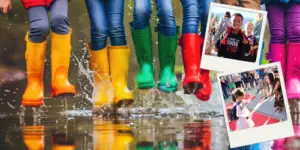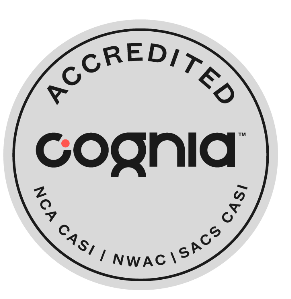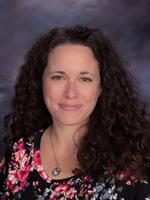School assemblies can sometimes get a little noisy, but when Dovie Thomason, a Kiowa-Apache storyteller, started talking to the students in Hillcrest’s auditorium on a recent Wednesday, you could have heard a pin drop.
The students were mesmerized by Thomason’s performance, which took place as part of the Center for Documentary Expression and Art’s month-long education outreach program at Hillcrest. The program, called, “Sacred Images: A Vision of Native American Rock Art,” began with a weeklong workshop in making murals and storytelling. Thomason shared her experiences in individual ninth-grade geography and English classes throughout the week, then took the stage to captivate her audience at the assembly.
“We all have stories we don’t want to tell,” Thomason told the audience, “but we need to.”
In her story, Thomason described the movement to “educate” Native American children in the late 1800s by sending them to boarding schools and stripping them of their culture. Thomason talked about visiting the former grounds of the Carlisle Indian Industrial School in Pennsylvania with her daughter, telling her of the abuse, sickness and cultural annihilation that occurred there. The children who were sent to the school were punished for speaking their native language, Thomason told the crowd, and their personal belongings, including heirloom blankets and traditional clothing, was destroyed. Years later, when the children were released, they no longer spoke, or acted, or thought like their parents, Thomason said.
“With fire you can make the day longer with light you can do powerful things that humans can do,” Thomason told the students. “We can use this history lesson as fuel. We can use this to light our way. … I want better for my daughter. For each of you, I want something better than survival, and for that we have to use our history as fuel.”
Thomason has been featured at the National Museum of the American Indian, the Kennedy Center, Smithsonian Museum and Shakespeare’s Globe Theater in England. She has also voiced narrations for the BBC, NPR, PBS and the National Parks Service. She visited Hillcrest as part of the Center for Documentary Expression and Art’s artists and scholars-in-residence program.
The program, with financial support from various community resources, began with a day-long field trip to Nine Mile Canyon, where students examined ancient rock art and petroglyphs.
“We come from a complex place, and it was complex long ago,” Leslie Kelen, Executive Director for the Center for Documentary Expression and Art said as he explained the purpose of the field trip. “How do you begin to get a sense of the place we live in? This is all about that. In a lot of ways, what we do is about a connecting of worlds.”
A group of 15 students will take their impressions from the canyon and create a mural of their own, to be presented in November during Native American Month. So far, the students are still developing the theme for their mural but it might have something to do with the future, said Jennifer Lopez, a senior working on the project who was inspired by the longevity of the petroglyphs.
“I thought it was interesting,” Lopez said. “It’s amazing that it’s still there, and it’s been a really long time. It just tells us about our past.”
Photos by Kent Miles, courtesy CDEA





